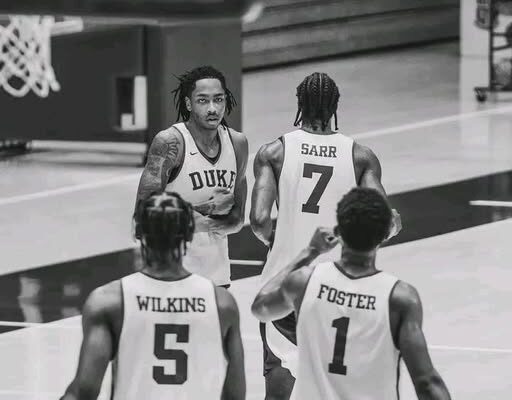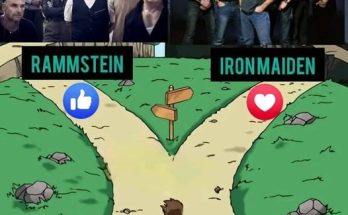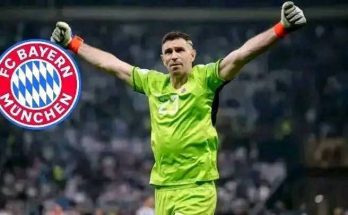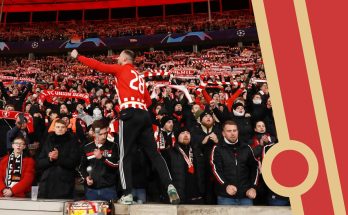“Practice Is Proof That This May Be the Deepest Duke Roster in Years” Durham’s battles are real. No one is safe, not even the freshmen or veterans. And Jon Scheyer wants it just that way.
Duke’s offseason practices this summer have felt fundamentally different, and for good reason: Jon Scheyer is building what might be the deepest roster in Durham in years, and the competitive intensity spilling into every drill is a testament to that. The phrase “Practice Is Proof That This May Be the Deepest Duke Roster in Years” isn’t just a catchy byline—it’s an understatement. As summer workouts continue at Cameron Indoor Stadium, every veteran and every freshman is pressed, scrutinized, and held accountable. In environments like this, complacency doesn’t survive, and that’s precisely what Scheyer wants.
The narrative surrounding Duke right now isn’t built on wild expectations of one transcendent star carrying the load. Instead, it’s constructed around balance, versatility, and depth—a team brimming with talent at multiple positions, each player capable of stepping into a starring role. That sense of collective capability is what drives daily competition. All levels of the roster, from returning bench players to star freshmen and incoming transfers, are battling for roles. In drills today, five guys could hypothetically start. Tomorrow, maybe it’s seven. That internal pressure means nobody’s spot is guaranteed.
Scheyer, just 37 and entering his fourth season as head coach, has clearly embraced this model. His approach has evolved from relying heavily on one-and-done phenoms like Cooper Flagg (who departed for the NBA) to orchestrating a more balanced, multi-year development strategy. This year, he’s leaned fully into it—returning bench contributors like Caleb Foster, Maliq Brown, Isaiah Evans, Darren Harris and Pat Ngongba have all chosen to come back instead of entering the portal (Duke Basketball Report). That collective decision to stay speaks volumes about the culture Scheyer’s building: one where competition, continuity and buy-in outweigh outside shortcuts.
When rookies and veterans alike show up to practice, they enter a crucible. Scheyer’s goal is to cultivate an atmosphere of relentless internal competition. Here’s how it manifests: position battles in every 5-on-5 session, rotations shifting mid-court, ball-screen coverage assignments flying like heat-seeking missiles. No one—whether long-tenured vet or highly-touted freshman—gets a pass. That sense of “nobody is safe” isn’t hyperbole; it’s intentional. Scheyer understands that replicating the intensity faced in Randy Bennett’s gyms or Bruce Pearl’s practices abroad requires building it in-house first.
That’s why a roster loaded with high-level depth is so crucial to this plan. Duke’s 2025‑26 squad is littered with upperclassmen who nearly started last year, juniors on the rise, incoming freshmen like Cameron Boozer and Cayden Boozer, plus impact transfers such as Cedric Coward hopefully bolstering certain rotations (SBNation.com). There’s size, athleticism, and positional overlap all over the court—from 7‑foot rim protectors to combo guards. It’s like chess: if two guys on the wing battle, a third and fourth guy can step right in. Depth breeds sustained competition, which breeds readiness, which breeds performance.
Contrast this with last season, when Duke started Cooper Flagg, Tyrese Proctor, Khaman Maluach, Kon Kneuppel and Sion James. It was a star-driven lineup, but they all departed. The task this year is more complex: can these bench players become starters? Can freshmen and transfers immediately impact rotation? It’s one thing to have depth on paper. It’s another to see it weather ACC slugfests and March Madness pressure. That’s where practice proves everything. A packed bench in which every backup is assured minutes reduces the variance of the outcome. Duke isn’t banking on magic; they’re banking on process.
Scheyer’s willingness to go deeper this time around also relates to his keen eye as a roster manager. In his first two offseasons, he preserved continuity—he didn’t lose a single scholarship player to the portal after the 2022‑23 season, and again in 2023‑24 (SBNation.com). That’s attrition control, and it gives you optionality. But this year he went a step further: he actively re‑recruited guys like Evens, Foster, Ngongba and others to return (Duke Basketball Report). That decision forced them to embrace competition—either play or sit. Personally, I think it’s the final piece in what made this offseason feel so full. Instead of chasing the flashy one-and-done transfer, Scheyer asked his own to stay and fight. That fight started day one of practice.
Layer in the incoming freshmen—the Boozer twins (Cameron and Cayden) and other highly rated additions—and you’re looking at a roster brimming with positional overlap: wings who can score and defend, forwards who handle and pass, bigs who protect the rim and stretch the arc. That positional flexibility simulates what NCAA coaches crave: the ability to switch defensive schemes without substitution, to beat mismatches offensively, to gamble on rotations mid-game. Practice sessions are full of live switching, scrimmages run in thrombs, and skill‑development reps layering film-based attack techniques—everyone’s position is blurred, and nobody is really ‘safe.’
Boozer, a projected one‑and‑done freshman and the highest-rated recruit in the class, has to navigate that internal gauntlet. Rookies in past Scheyer teams often received that star slot to grow over time. But this year? The older players—veterans who nearly started last year, even those who didn’t—are pushing. That’s purposeful. They’re not being purposely held back; they’re challenging expectations. The goal is obvious: force freshmen to earn it. Make them sharper, tougher, smarter. Let them learn that Duke isn’t a campus—they’re stepping into a culture.
That culture shift is real. Gone are the days where a dominant freshman strolls through practice and gets a starting nod out of rotation leverage. Instead, Scheyer has cultivated toughness through a mix of physical reps, mental grind, and habits of accountability. On the court, there’s contact on every screen, contested passes flying, and constant rebuff on loose balls. On the mental side, players are quizzed after drills: why did that possession die? Where did the spacing break? What coverage shifted? It’s not enough to execute; you must understand. That cognitive layer binds the team to game fluidity.
Practice intensity like this can burn you—or build you. The mindset Scheyer is fostering is one of resilience: if you fail, you get another look. If you win, the next guy gets the chance. That’s how deep rosters thrive. Nobody trusts purely on legacy or reputation. It’s day-to-day evidence of value. September to March, role clarity emerges from this. Maybe Foster starts as a sharpshooting glue wing. Maybe Evans takes a lead-guard spot. Maybe a freshman like Nik Khamenia surprises and lands in the rotation by December. It’s all on display in practice.
Now, why is this approach pivotal? One answer: the evolution of the transfer portal and NIL economy means rosters shuffle like blackjack cards every summer. Ten years ago, teams had five starters that played 95% of minutes. Now? Roles rotate, lineups morph, redrafting is constant. For Scheyer—who has an 89–22 record, multiple ACC titles and NCAA tournament wins on his ledger —the challenge isn’t winning games. It’s constructing rosters that adapt, stay hungry, and foster identity. Practice is how identity manifests.
Another factor here is experience development. The bench returnees that Scheyer re‑signed are players with NCAA tournament minutes. They know what happens when the lights shine. If cameras catch freshmen shying away or looking lost in scrimmage, he’ll catch them immediately. It’s not about scouts grades; it’s about poise, aggression and the simplest desires: dive for the loose ball, recover on defense, alert to help cover. These little moments are embedded in practice, and they matter far more than any highlight.
There’s also the transfer addition to consider. Cedric Coward, a three-level scoring transfer from Washington State, is expected to be a skilled, experienced addition to the frontcourt if he stays in schoo. Scheyer will lean on his experience to pace the team and show the path for how guards post or wings create. But Coward arrives to fight too—no starring role handed by tradition. He’s expected to bring scoring, defense and leadership, but first he integrates into the internal grind. If he elevates practice, everyone else lifts up.
All of this talk about depth and competition means nothing unless players believe it. And the fact the returning role players chose to stay reveals they do. It’s one thing to be held out of the portal because nobody wants you. It’s another to elect to stay in a fight you could exit. That’s buy-in. That depth isn’t patched together; it’s earned.
A final point: Scheyer’s roster strategy doesn’t ignore starpower. Boozer, Flagg’s replacement, is projected to lead. But he’ll only lead a team if this deep group acts like a team. Talent can win nights. Culture wins seasons. Practice proves culture. Duke’s summer practices are trending national-championship-level not because of a headline freshman, but because two-deep players at every position are ripping through reps, feeding off internal energy, and preparing to pounce on every small opening come game nights.
In sum, “Practice Is Proof” isn’t a stray piece of fan hyperbole—it’s the championship roadmap for Duke’s future. Jon Scheyer has built a roster so deep that trust is earned daily, not presumed by rank. That depth exists from top to bottom, across all spots. Practices are fierce, detailed and relentless. Veterans can’t capriciously call plays. Freshmen can’t hide behind hype. Transfers have to earn respect. The biggest depth advantage in years for Duke won’t be won in November. It’ll be forged in August—with each contested rebound, each defensive rotation, each film-session quiz. That’s the proof. And if December ends with a deep rotation ready to withstand injuries and high-stakes nights, we’ll look back and realize all the metrics were right: Duke’s deepest roster in years was never just on paper—it was tested in practice, defined by competition, and made real on the court.



